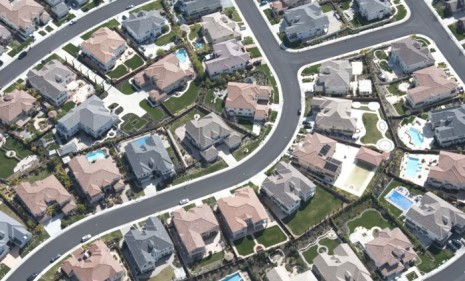Are suburbs the new slums?
A new report says more poor people now live in suburbs than in cities. What does that mean for those who live there?

In America, the word "poverty" is often associated with urban slums — poor, dangerous neighborhoods in big cities such as New York and Chicago. But in the past decade, according to a Brookings Institution study, the suburbs have overtaken cities as the epicenter of American poverty. (Watch a CBS report about the spread of poverty.) Here's a brief guide to the plight of American suburbs:
How fast is suburban poverty rising?
In 1999, cities and suburbs had roughly the same number of people living in poverty. But, thanks to a "whopping" 37.4 percent increase in suburban poverty in the last decade, there were 1.6 million more poor people in suburbs of the nation's largest metro areas last year than in the cities themselves. There are now 13.7 million suburban Americans living in poverty, which the U.S. government defines as a family of four with $21,954 in annual income. Cities still have higher poverty rates — about 19.5 percent, compared with 10.4 percent in the suburbs — but the gap is narrowing.
The Week
Escape your echo chamber. Get the facts behind the news, plus analysis from multiple perspectives.

Sign up for The Week's Free Newsletters
From our morning news briefing to a weekly Good News Newsletter, get the best of The Week delivered directly to your inbox.
From our morning news briefing to a weekly Good News Newsletter, get the best of The Week delivered directly to your inbox.
Why are the suburbs so vulnerable?
While cities have seen recession-level poverty for generations, suburbs have "largely escaped earlier downturns," says The Economist. Not this time — the current downturn is slamming suburbs. And since these areas used to be relatively affluent, they don't have much of a social services safety net for the poor, according to another Brookings study. The agencies that do operate in suburbs have been overwhelmed with requests for help. But "because of the bleak fiscal situation," according to Brookings, more than one in five suburban nonprofits has actually reduced services since the recession began.
Which areas have suffered the most?
Not surprisingly, communities that have been hardest hit by foreclosures and bankruptcies have seen the biggest increase in suburban poverty. These include sun-belt cities like Lakeland, Fla., and the San Bernardino area of California, as well as Tampa, "which had seen large population gains during the housing boom." Rust-belt cities such as Detroit also saw a large increase. An extreme case is Allentown, Penn., where the poverty rate skyrocked from 19 to 29 percent.
A free daily email with the biggest news stories of the day – and the best features from TheWeek.com
Will the suburbs bounce back soon?
Probably not. Poverty increased much more in 2009 than it did in 2008, and the downward trend appears unlikely to slow in the coming year. Meanwhile, "states like California and Illinois have massive deficits that limit the prospect for state support of social service agencies," and "philanthropy is down" — so, if anything, already tenuous safety nets could become even less reliable.
Sources: Brookings, The Economist, Associated Press, ScienceBlog
-
 ‘All of these elements push survivors into silence’
‘All of these elements push survivors into silence’Instant Opinion Opinion, comment and editorials of the day
-
 A running list of US interventions in Latin America and the Caribbean after World War II
A running list of US interventions in Latin America and the Caribbean after World War IIin depth Nicolás Maduro isn’t the first regional leader to be toppled directly or indirectly by the US
-
 How to rekindle a reading habit
How to rekindle a reading habitThe Week Recommends Fall in love with reading again, or start a brand new relationship with it